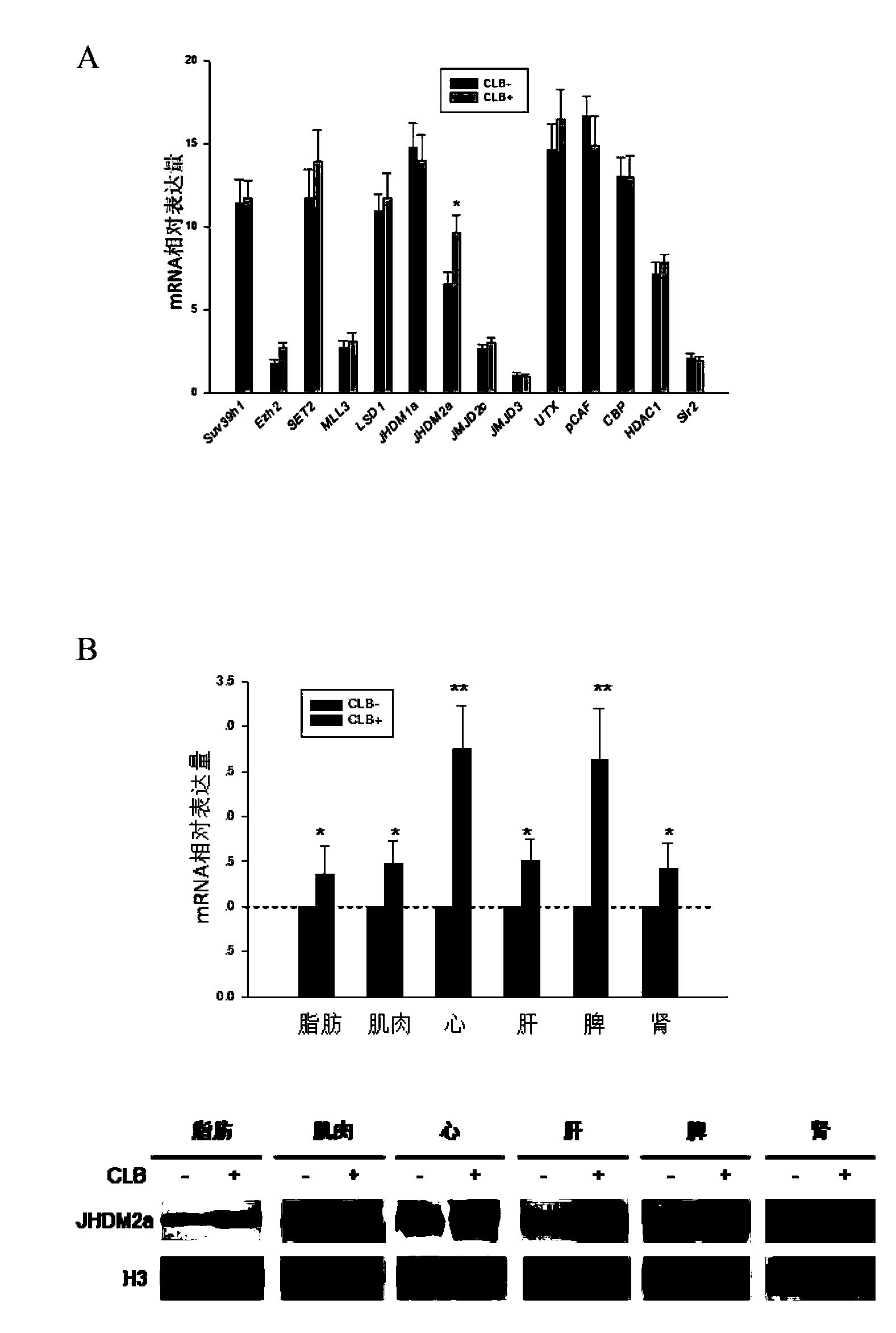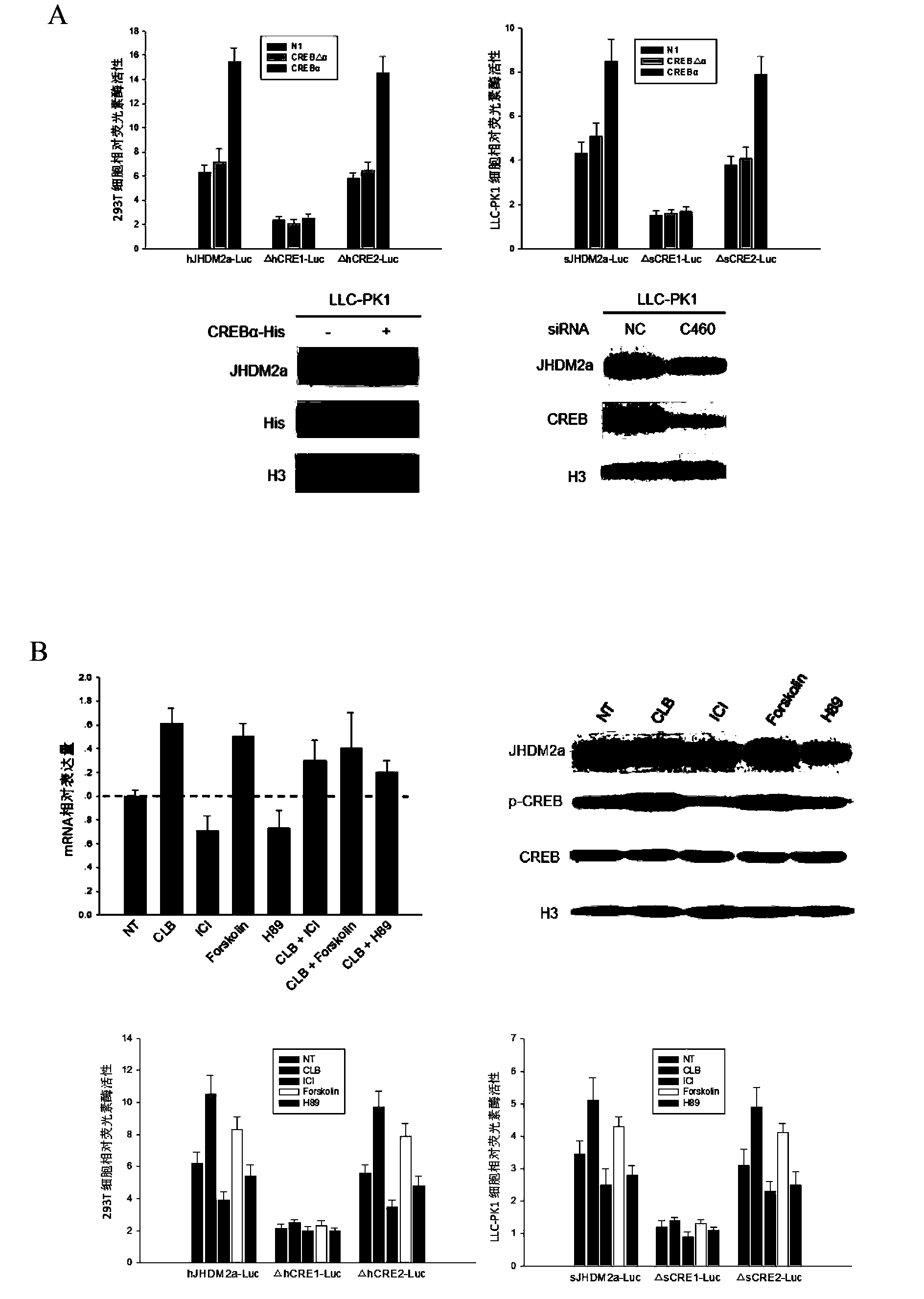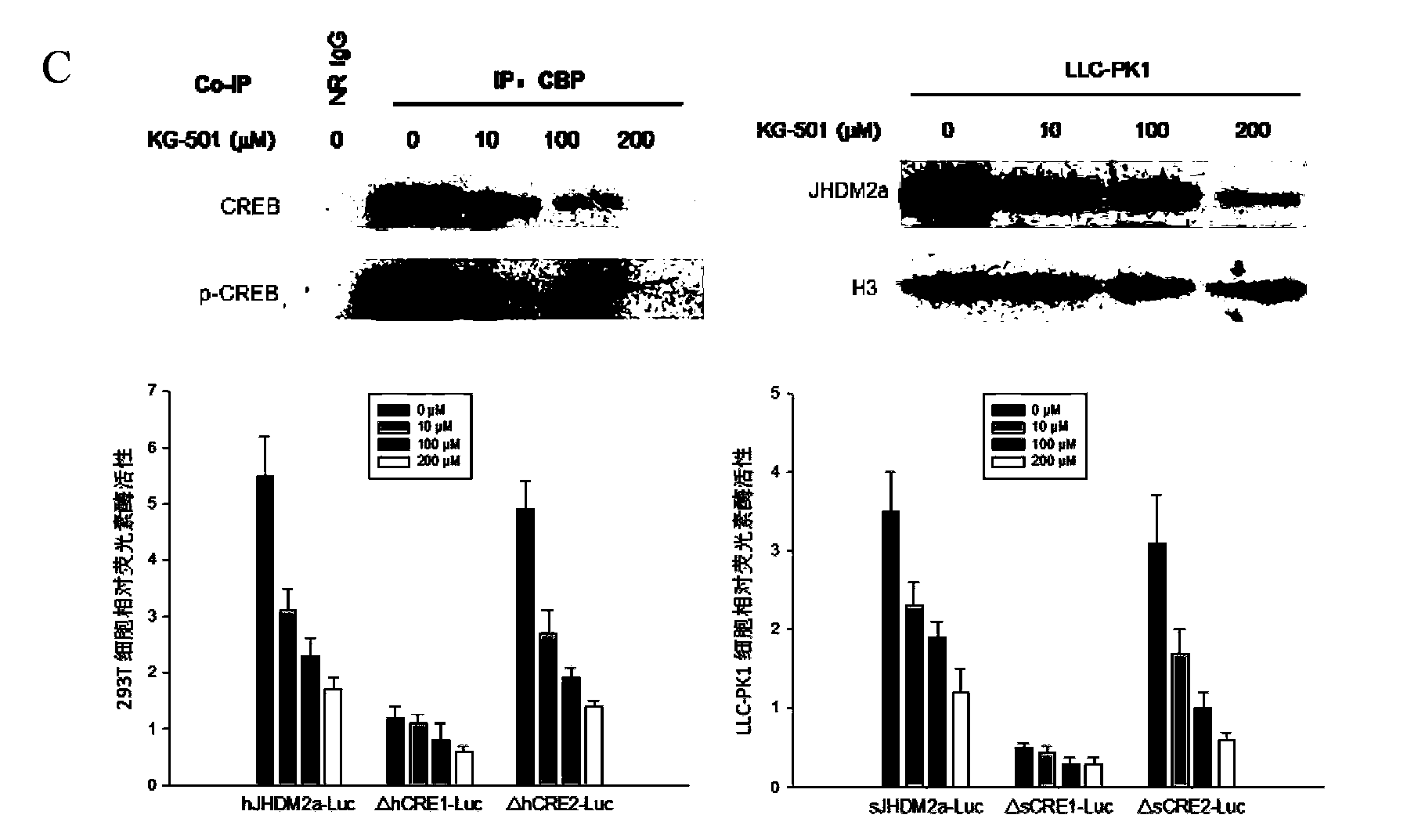Applications of transcription factor CREB in JHDM2A gene expression regulation and pig lipid deposition reduction
A technology of JHDM2A and transcription factors, applied in the field of cell signal transduction and epigenetics, can solve the problems that the functions have not been fully discovered and reported, and achieve the effects of reducing fat deposition, increasing lean meat percentage, and small fat cells
- Summary
- Abstract
- Description
- Claims
- Application Information
AI Technical Summary
Problems solved by technology
Method used
Image
Examples
Embodiment 1W
[0030] Embodiment 1Western Blot analysis
[0031] The nuclear extracts of various porcine tissues and cells were prepared using the nucleus-cytoplasm extraction kit. SDS polyacrylamide gel electrophoresis was used to separate the protein after the protein concentration was determined by the BCA kit, and then the protein was transferred to the PVDF membrane and hybridized with the antibodies of JHDM2a, CREB, p-CREB (phosphorylated CREB) and His respectively, H3 As an internal reference for nucleoprotein.
[0032] Experimental results such as figure 1 Under B, figure 2 Under A, figure 2 B upper right, figure 2 C is shown on the upper right. The specific experimental steps are as follows:
[0033] SDS-PAGE:
[0034] (1) Assemble the electrophoresis device: ①Wash the glass plate with distilled water and dry it, and prepare two clean small beakers; ②Fix the glass plate on the glue-filling bracket.
[0035] (2) Prepare different concentrations of separating gels according...
Embodiment 2
[0058] Embodiment 2 Quantitative PCR (qRT-PCR)
[0059] Total RNA was extracted from porcine tissues and cells using TRIzon kit, and cDNA was synthesized by reverse transcriptase. Quantitative PCR primers were designed. The sequences of quantitative PCR primers are shown in Table 1. ABI7900HT quantitative PCR instrument and SYBR Green were used to detect the mRNA level of specific endogenous genes.
[0060] Table 1 Primers for quantitative PCR of porcine histone modifying enzymes
[0061]
[0062] Experimental results such as figure 1 A. figure 1 on B, figure 2 A is shown on the upper left.
[0063] The specific experimental steps are as follows:
[0064] Extraction of total RNA:
[0065] (1) DEPC-treated experimental equipment, autoclaved or dry-baked at 180°C for 8 hours.
[0066] (2) Take 30-50mg of porcine tissue, put it in 1ml TRlzol, and homogenize it for 1-5min.
[0067] (3) Place on ice for 5 minutes to completely dissolve the nucleoprotein complex, add 0.2...
Embodiment 3
[0078] Example 3 Constructing the recombinant vector
[0079] About 3kb of the pig and human JHDM2a promoter regions were amplified and connected to the multiple cloning site of the luciferase reporter gene vector pGL3-Basic vector (no promoter) to construct recombinant s / hJHDM2a-Luc (s - pig, h-human) luciferase reporter gene vector. Nhe Ⅰ and Xho Ⅰ restriction sites were added to both ends of the promoter region of JHDM2a, and the pGL3-Basic vector was cut with Nhe Ⅰ and Xho Ⅰ respectively, and then ligated into a recombinant vector. The s / hCRE1 and s / hCRE2 mutation primers were used to amplify the corresponding vectors to construct the mutant vectors Δs / hCRE1-Luc and Δs / hCRE2-Luc.
[0080] In order to obtain the pEGFP-CREBα / Δα-His recombinant plasmid, amplify the CREBα / Δα full-length cDNA sequence, add the His tag sequence, and clone it into the pEGFP-N1 vector between the NheI and HindIII endonuclease sites to form pEGFP-CREBα / Δα-His recombinant vector.
[0081] See Ta...
PUM
 Login to View More
Login to View More Abstract
Description
Claims
Application Information
 Login to View More
Login to View More - R&D
- Intellectual Property
- Life Sciences
- Materials
- Tech Scout
- Unparalleled Data Quality
- Higher Quality Content
- 60% Fewer Hallucinations
Browse by: Latest US Patents, China's latest patents, Technical Efficacy Thesaurus, Application Domain, Technology Topic, Popular Technical Reports.
© 2025 PatSnap. All rights reserved.Legal|Privacy policy|Modern Slavery Act Transparency Statement|Sitemap|About US| Contact US: help@patsnap.com



